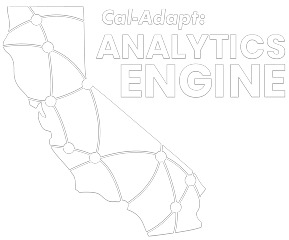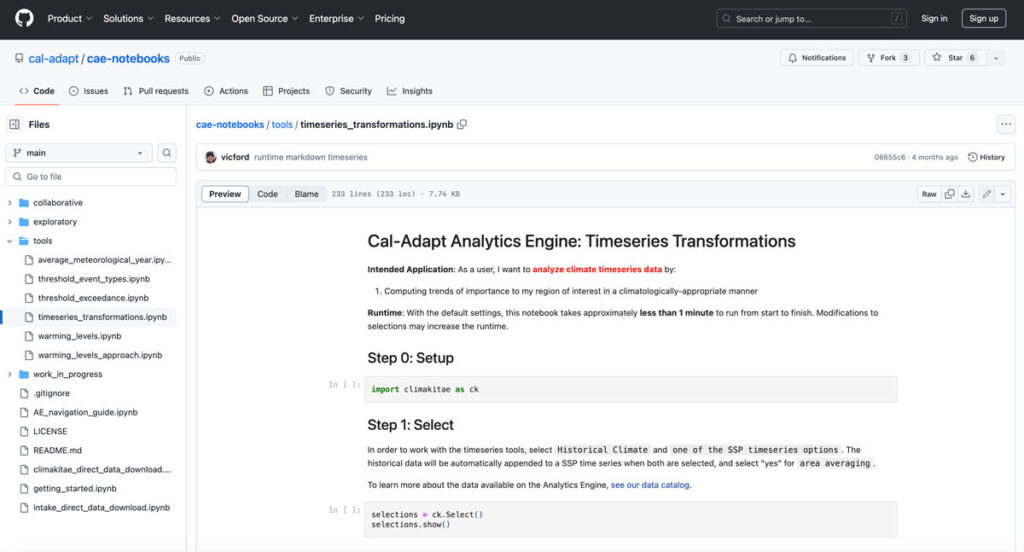Close
Close
California has invested a lot in producing climate projections, but climate data can be difficult to access and utilize for many users.
The Analytics Engine will offer a cloud-based analytics platform to help transform the petabytes of data into useful and accessible data products.


Interactive panels allow users to customize data and visualizations, while basic climate data processing functions and advanced features are provided through a custom open-source code library (climakitae).

Explore and subset the data available on the Analytics Engine
Explore internal variability by focusing on projected changes in extreme precipitation
Explore model uncertainty by focusing on temperature trends across simulations
Understand the duration of extreme events
Apply a global warming levels approach to understand the regional response
Analyze climate timeseries data